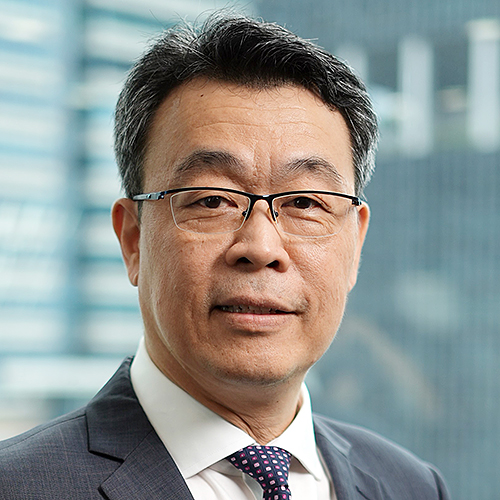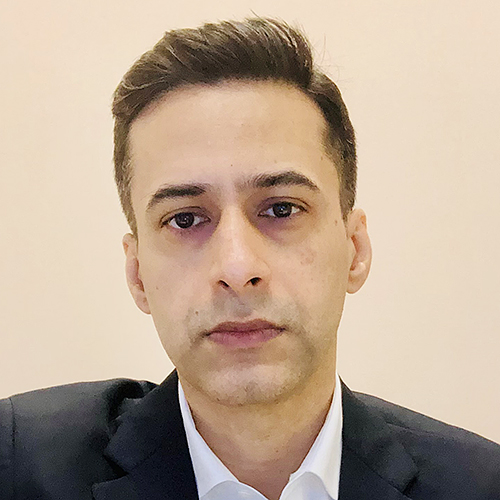 Millennials, those born between the early 1980s to early 2000s, now make up a large and very important segment of high-net-worth (HNW) investors in the world.
Millennials, those born between the early 1980s to early 2000s, now make up a large and very important segment of high-net-worth (HNW) investors in the world.Asia alone accounts for nearly two-thirds of all millennials, according to Deloitte. In China, there are about 415 million millennials, which is more than the combined working population of the US and Europe, according to a study by Goldman Sachs.
Millennials are expected to have a large impact on investment trends in the private banking and wealth management industry. Their average annual income is expected to more than double from US$5,900 in 2014 to US$13,000 in 2024. Their combined income is expected to reach US$5.4 trillion by 2024, which is twice the GDP of the UK, the Goldman Sachs study says.
As the population of millennials and their share of global income continues to grow, private bankers and wealth managers are increasingly paying close attention to this demographic. But one of the challenges that faces private banks and wealth managers in servicing millennial clients is how to generate performance in the current low-yield environment.
Although this is a common problem for all investors today, it is a more serious challenge for millennials who are generally starting their careers saddled with more debt and lower investable income. In Hong Kong alone, it takes about 10 years for a new university graduate to pay off his/her student loan.
In addition, a stricter regulatory environment and the advent of financial technology, which millennials tend to be better at than their older colleagues, are making millennials much more discerning in their investment habits.
Asia’s top private bankers and wealth managers are, in fact, scrambling to seek out alternative investment solutions that would put them in a better position to help more discerning and sophisticated millennial investors.
“There is a lot of uncertainty in the market as millennials ask their private bankers and wealth managers ‘what are we missing?’ (from their investment portfolio). They see many potential black swans on the horizon, such as another global growth scare induced by China, a messy unwinding of central bank balance sheets, runaway inflation, political populism, and potential war in North Korea. Never mind that real black swans, by definition, aren’t seen by many ahead of time. In 2017, they are seemingly everywhere,” says Kam Shing Kwang, chief executive officer for Asia and senior country officer for Hong Kong at J.P. Morgan Private Bank.
In today’s low volatility environment, the natural reaction of investors is to invest in insurance policies which are relatively inexpensive compared to other financial instruments.
“We would argue that upside protection is equally attractive, if not more so. This is especially true in the case of European equities where cyclical growth has more runway, or in the tech-enabled parts of the US equity market where secular growth still dominates,” says Kwang.
With prospective interest rate hikes on the horizon, the low volatility regime is expected to begin, although there are many people who are still sceptical about how long it can last.
“Some investors think we’re experiencing the calm before the storm when they hear that realized and implied volatility has fallen across asset classes, most notably in equities,” says Kwang.
The situation is further aggravated by disruptions brought about by rapid advancements in technology that continue to drive down prices of goods, while housing prices in the US are no longer accelerating as the multifamily sector is oversupplied.
“Benign inflation means the low volatility regime can extend, and markets can continue their upward drift. That is not to say we can’t see a central bank mistake in the interim, such as the Fed or ECB (European Central Bank) normalizing interest rates too quickly, even in the context of benign inflation. But as a matter of strategy, we would welcome that type of mistake and the buying opportunity it would present,” says Kwang.
But without accelerating inflation, there are limits to how quickly central banks will normalize interest rates. If the market starts to suggest the pace of normalization is too fast, central banks will likely back off, using low inflation as an excuse.
In this type of macro economic environment, private bankers and wealth managers are resorting to more creative ways of providing investment solutions.
For Jimmy Lee, head for Asia-Pacific at Bank Julius Baer, low overall yields across traditional safe-haven income generation instruments, such as savings accounts, bank deposits, or government bonds, no longer support the save-for-the-future strategy that was popular among the pre-millennial generations, to meet their future real spending needs.
“As the low-yield environment is likely to persist as a new normal in the foreseeable future, millennial clients need to explore non-traditional ways to preserve their wealth,” says Lee.
The key factor to identifying the winning strategy in the current environment is to understand the impact of the low-yields on different asset classes.
“For example, low yields have been beneficial for the corporates as they can borrow money at lower cost to invest for their business growth, and thus translates to better performances of the companies’ stocks and bonds. We have been helping clients to navigate various such investment climates through tailored advice and multi-asset portfolio construction,” says Lee.
For Andy Chai, head of Hong Kong market, wealth management at BNP Paribas, generating income in the low yield environment is an ongoing challenge for investors.
“We offer our millennial clients selected ideas to help balance risk-return under the current market conditions, such as unconstrained, flexible bond strategies that generate sustainable yield without taking undue interest rate risk, structured solutions which generate yield or yield with a buffer, and increased allocations to alternative asset classes like private equity and hedge funds,” says Chai.
In the search for investment solutions, one area where millennials are quite comfortable is in the use of digitization to improve wealth management products and client service offerings by private banks and wealth managers.
“Asia, and particularly China, has a relatively high digital adoption rate within the ultra HNW space, so our ongoing investment in our digital platforms will be key. Fintech is reshaping the way that we do business. We’ll use fintech capabilities to manage day-to-day transactions, provide investment advice to clients in a more efficient way, and broaden our communication channels with clients,” says Kwang.
Millennials, in particular, are hungry for innovation when it comes to wealth management. This has resulted in a number of startups backed by venture capital seeking to fill this requirement. On the other hand, regulators are still struggling to create a framework for financial technology.
J.P. Morgan Private Bank is looking at a number of key areas in fintech including data science, blockchain, robotics, cloud and cyber security. For its part, Julius Baer has also been investing heavily in technology, rolling out in 2016 a service which is similar to an advanced robo-advisory-based platform that offers holistic advice.
“Clients are asking a range of questions to build a personal profile and about asset allocation, and each day advisers receive an update of whether or not client portfolios need adjusting. Initially, the platform is only for relationship managers, to ensure the advice is reliable,” says Lee.
The bank has also invested several hundred million Swiss francs in overhauling its technology across the globe. By 2020, all booking centres will be operating on the same platform and the bank will be completely digital.
BNP Paribas Wealth Management has also launched in Asia its global programme developed through a close collaboration between a select group of clients, fintechs and the bank’s wealth management specialists, that involves a series of ground-breaking innovations and solutions.
“Our objective is to create a new form of wealth management model that adapts the banking services to every aspect of a client’s life. It is vital that we continue to improve our flexibility and agility while integrating and, above all, anticipating clients’ needs,” says Tsai.
The programme complements the bank’s existing relationship-driven business model, enabling it to serve clients in multifaceted ways.
“By leveraging these new digital solutions, our relationship managers can now deliver products and services by offering a seamless user-experience across multiple channels,” says Tsai.





.jpg)
.jpg)


